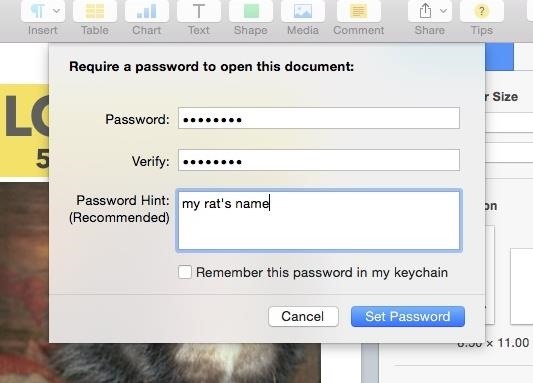Git-osx-installer The official stand-alone installer for Git on OS X. A free file archiver for extremely high compression KeePass. A lightweight and easy-to. This password cracker works on MAC OS X, Microsoft Windows, and Linux. What are the most often uses for Ophcrack? The primary purpose of this password cracker is discovery. If the password is a simple one, it can find that out within a few minutes. If you purchase some additional rainbow tables; you’ll be able to crack more complicated passwords.

Cloud Password Recovery Services
assisting cyber security experts
Who are you?
Apple macos sierra for mac download. Cloud-based service that attempts to recover passwords (hashes, WPA dumps, Office, PDF, iTunes Backup, Archives) obtained in a legal way (pentest, audit,.).

What kind of password?
We support more than 90 hash algorithms: LM, NTLM, MD5, OSX, MySQL, Wordpress, Joomla, phpBB, Office, iTunes Backup, PDF, Archives, WPA(2),.. Full list here!
Contact us if you want us to add a new algorithm.
Osx Zip File With Password
How to get Support?
Frequently Asked Questions or
direct email
We answer within 2-48 hours.
Who would use your services?
IT security experts, penetration testers, cyber security enthusiasts, people who has forgotten their password.
Cloud based
Osx Zip With Password
We use massive cloud computing clusters to perform a huge amount of calculations. You do not need to install any (crappy) software on your computer. Just upload your hashes or files to our website and wait for the result.
Pricing
Word download on mac. We attempt to recover each task you send us for free. If password is successfully recovered and weak we give it to your for free, no registration, no constraints.
More information about our pricing here.

The package is located inside a disk image (.dmg) file that you first need to mount by double-clicking its icon in the Finder. It should then mount the image and display its contents.

Before proceeding with the installation, be sure to stop all running MySQL server instances by using either the MySQL Manager Application (on macOS Server), the preference pane, or mysqladmin shutdown on the command line.
To install MySQL using the package installer:
Download the disk image (
.dmg) file (the community version is available here) that contains the MySQL package installer. Double-click the file to mount the disk image and see its contents.Figure 2.1 MySQL Package Installer: DMG Contents
Double-click the MySQL installer package from the disk. It is named according to the version of MySQL you have downloaded. For example, for MySQL server 5.7.35 it might be named
mysql-5.7.35-osx-.10.13-x86_64.pkgThe initial wizard introduction screen references the MySQL server version to install. Click to begin the installation.
Figure 2.2 MySQL Package Installer Wizard: Introduction
The MySQL community edition shows a copy of the relevant GNU General Public License. Click and then to continue.
From the Installation Type page you can either click to execute the installation wizard using all defaults, click to alter which components to install (MySQL server, Preference Pane, Launchd Support -- all enabled by default).
Although the option is visible, the installation location cannot be changed.
Figure 2.3 MySQL Package Installer Wizard: Installation Type
Figure 2.4 MySQL Package Installer Wizard: Customize
Click to begin the installation process.
After a successful installation, the installer displays a window with your temporary root password. This cannot be recovered so you must save this password for the initial login to MySQL. For example:
Figure 2.5 MySQL Package Installer Wizard: Temporary Root Password
MySQL expires this temporary root password after the initial login and requires you to create a new password.
Summary is the final step and references a successful and complete MySQL Server installation. the wizard.
Figure 2.6 MySQL Package Installer Wizard: Summary
MySQL server is now installed, but it is not loaded (or started) by default. Use either launchctl from the command line, or start MySQL by clicking 'Start' using the MySQL preference pane. For additional information, see Chapter 3, Installing a MySQL Launch Daemon, and Chapter 4, Installing and Using the MySQL Preference Pane. Use the MySQL Preference Pane or launchd to configure MySQL to automatically start at bootup.

When installing using the package installer, the files are installed into a directory within /usr/local matching the name of the installation version and platform. For example, the installer file mysql-5.7.35- installs MySQL into osx10.13-x86_64.dmg/usr/local/mysql-5.7.35-osx10.13-x86_64/ . The following table shows the layout of the installation directory.
Table 2.1 MySQL Installation Layout on macOS
Osx Zip With Password Command Line
| Directory | Contents of Directory |
|---|---|
bin | mysqld server, client and utility programs |
data | Log files, databases |
docs | Helper documents, like the Release Notes and build information |
include | Include (header) files |
lib | Libraries |
man | Unix manual pages |
mysql-test | MySQL test suite |
share | Miscellaneous support files, including error messages, sample configuration files, SQL for database installation |
support-files | Scripts and sample configuration files |
/tmp/mysql.sock | Location of the MySQL Unix socket |
Mac Osx Zip File With Password
During the package installer process, a symbolic link from /usr/local/mysql to the version/platform specific directory created during installation is created automatically.
